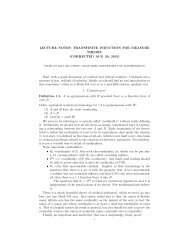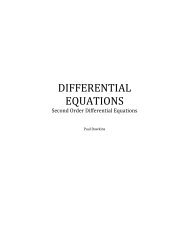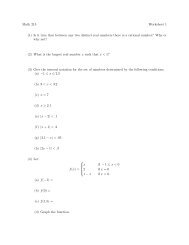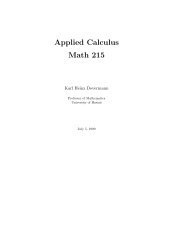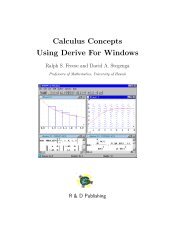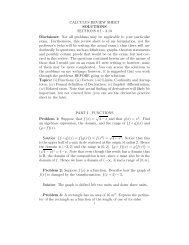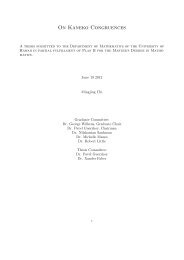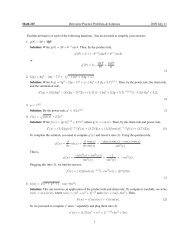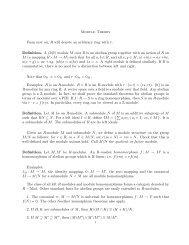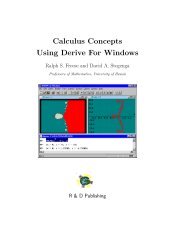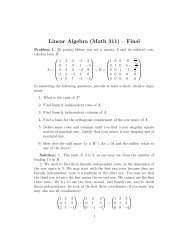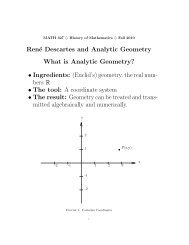Problems and Solutions in - Mathematics - University of Hawaii
Problems and Solutions in - Mathematics - University of Hawaii
Problems and Solutions in - Mathematics - University of Hawaii
Create successful ePaper yourself
Turn your PDF publications into a flip-book with our unique Google optimized e-Paper software.
2.1 1989 April 2 COMPLEX ANALYSIS<br />
It rema<strong>in</strong>s to check that <br />
2I =<br />
∞<br />
−∞<br />
Indeed, <br />
γR<br />
f(z) dz → 0, as R → ∞, which will allow us to conclude that<br />
<br />
f(x) dx = lim<br />
R→∞<br />
ΓR<br />
<br />
f(z) dz −<br />
<br />
<br />
f(z) dz<br />
<br />
γR<br />
=<br />
<br />
<br />
<br />
cos z<br />
<br />
γR (1 + z2 <br />
<br />
dz<br />
) 2 ≤<br />
This <strong>in</strong>equality holds for all R > 1, so, lett<strong>in</strong>g R → ∞, we have <br />
I =<br />
∞<br />
0<br />
γR<br />
<br />
f(z) dz = lim f(z) dz =<br />
R→∞ ΓR<br />
π<br />
. (32)<br />
2e<br />
1<br />
(R2 − 1) 2 ℓ(γR)<br />
πR<br />
=<br />
(R2 .<br />
− 1) 2<br />
γR<br />
cos x<br />
(1 + x2 π<br />
dx =<br />
) 2 4e .<br />
42<br />
f(z) dz → 0. Therefore, by (32),<br />
⊓⊔




